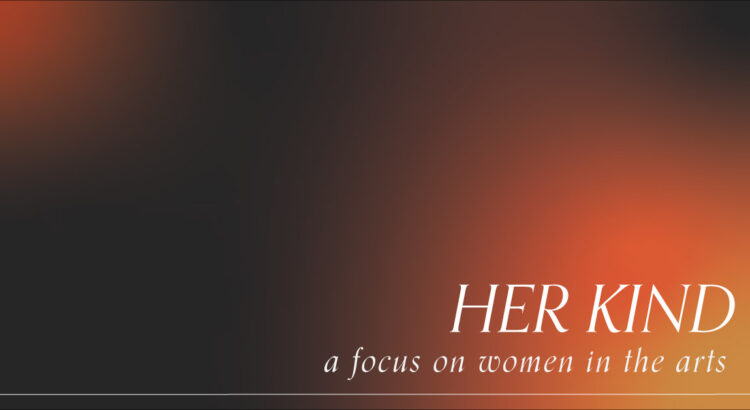


Sadness is an essential part of the human experience. It may not be all that pleasant, but if you feel sad, it’s important to embrace it. It’s there for a reason, so listen to it.





Sadness is an essential part of the human experience. It may not be all that pleasant, but if you feel sad, it’s important to embrace it. It’s there for a reason, so listen to it.

The tale of Snow White by the Brothers Grimm initially depicts Snow White as being a child. However, the story is quite dark when the evil queen/stepmother tries to murder Snow White three times and finally succeeded on the fourth try with the famed poisoned apple. Many depictions of Snow White, including the Disney movie adaptation, show Snow White as being much older than the original tale, usually as a teen. I wanted to create a Snow White that was younger in appearance, so I made her face very large and round. I was inspired by the chibi style in Japanese anime/manga, and also by Strawberry Shortcake. 


For my story, many of the side characters have horns. Some families have particular horn shapes. A group of people has horns based on the beaks of tropical birds, others on comets and glass. Some horns float, and others can move like attached spider legs. It’s fun to come up with all these concepts.

Tokavsk has a tradition of forcing those convicted of high treason to confess their crimes. The reasons for this tradition are unclear, and some argue it is unwise to disseminate the internal logic of the condemned. The below confession is different in that, in addition to being the only letter we have retrieved from the current King’s reign, it is hardly a confession at all. Rather, it reads more as a rant. It also makes attempts to level accusations against the King, though it provides no specific examples, perhaps due to the intense fury of the author.
Iron-blooded is an apt sobriquet for him, more than apt. They might as well have told me he was a fiend outright and shown me the antlers upon his head. I’m laughing at the irony of it. I was warned never to cross him, but I never thought his reaction would be as extreme as this. To be a courtier is to serve the King, but it is also to fight for your House and your province. That is what the system has always been, what I have been told.
I did what was within my limits. I never meant to tear the hide, but by the time I realized I had it was too late. You want me to explain why I did what I did. You want me to glorify the King, but I will not, will not, will not with my dying breath. Let me fall into the Iyentsh River and never feel anything again but cold. You have already condemned me to the eternal chill. Nothing I write will reverse my fate. See, I laugh—I laugh as I’m writing this, laugh to keep from screaming. ‘Tis a cruel joke bestowed upon me. The end was obvious from the beginning. There is no freedom, not for anyone who does not agree expressly with the King, His Royal Majesty Stergye Tallat the Iron-Blooded, Short May He Reign. Anyone who shows his dissent will end up as I have. Let them know my name—let they who inhabit this cell after me feel it in the cold stone walls, taste it in the gruel meant to keep them alive until their execution. Let them remember my essence, even if everywhere else the memory of my existence is stricken. I know what happened to the ambassador. I know what the King does to keep you close to his torch. Those secrets will not die with me—someone else will find them—I promise you that. Promise you with the same fervor with which you love your king.
Signed,
[Name stricken]


“The fire you like so much in me”
I’m writing this after my last class of the Fall 2022 semester. While reflecting on the semester today, I had a thought: I don’t have any tattoos, but the words “Strange Loop” are what I would choose to get if I were to get one — and I’ve been considering this one for over four years.
“Is the mark of someone adamantly free.”
For me, this song encapsulates a feeling and understanding that I can hardly describe, let alone fully articulate in one of my brief Song Scribbles blogs – but that’s what’s so amazing about music, right?
“But you can’t stop yourself from wanting worse,”
For me, “Strange Loop” means that even though things might be going smoothly for me in the current moment, eventually there will be a time full of more stress and anxiety. On the flip-side, though, while things may be overwhelming in a moment, they will turn for the better in due time.
“’Cause nothing feeds a hunger like a thirst.”
This semester itself has been a “Strange Loop” for me — full of highs and lows, hopeful moments as well as anxious ones. I must always remember that nothing is permanent – the good isn’t permanent, but the beauty in that is that the bad isn’t permanent, either. We just need to be patient and strong enough to wait until the tides turn.
“Baby, I’m tired of fighting.”
Fall 2022 has been full of learning for me, as much outside of the classroom as inside. I’ve spent the past four months learning about the world and how to navigate it as well as learning about myself, and I’m so proud of myself for making it through as bravely as I did.
“I always wanted you…”
There will be good times in the future and there will be bad times. There will be challenges, and there will be smooth sailing. The only guarantee is that things change, and I know that my positive attitude, as well as help from my loved ones, will get me through whatever this life throws at me.
“I only wanted more than I knew.”
Listen to Strange Loop by Liz Phair here: https://www.youtube.com/watch?v=4eYsEvAkZbc

Hey everyone! Happy last-week-of-the-semester!

This week, I want to focus on the fresh, ethereal music of Unsuk Chin. Chin is a South Korean composer
born in 196 and currently resides in Berlin, Germany. She studied with Ligeti in Hamburg, which is quite evident in her writing style. Her musical language is uncompromisingly vivid and modern.
I decided to take a closer look at her piano etudes because I’m already familiar with and quite enjoy her piano concerto and violin concerto—two beautiful pieces of music everyone should listen to! These etudes cover a vast amount of musical territory for only six pieces. Chin even explores what granular synthesis, a digital process, might sound like at the piano.
A frequent theme of Chin’s music is the exploration of the harmonic series–and this is particularly evident in her Etude No. 1. You can hear how she outlines the partials of the C overtone series in the opening bars, and all her material for the etude is derived from those explorations. The influence of Ligeti is also quite apparent in these etudes; I notice it most in how she organizes her rhythms.
The German term “sequenzen” serves as the title for Etude No. 2. This translates to sequence of course, but Chin’s use of sequences are not limited to traditional harmonic or melodic sequences, rather they are used as a means for generating a wide variety of musical material. The initial motive is continually altered via ornamentation, diminution, and expansion. Chin creates interest by varying the registers and articulations used for each iteration of the motive. The piece unfolds as an arc; it swells to a climax then fades away through dynamics, tempo, and rhythms.
The Toccata, or Etude No. 5, is certainly my favorite of the set—the opening bars are particularly charming, and as in Etude No. 1, these measures reflect her interest in the harmonic series. Somehow this fifth etude reminds me of an inverted version of Ligeti’s Musica Ricercata. Chin centers the piece around a C major-minor 7th chord. In addition to the components of a C major-minor 7th chord (which are also the lower partials of the C overtone series), Chin uses harmony derived from the upper partials of the C overtone series quite a bit in this etude. I love her harmonic language here—it feels organic and fresh at the same time.
Etude No. 6, “Grains” confirms Chin’s fundamentally organicist approach to writing music. The piece is structured around the electronic music idea of granular synthesis–where small cells of sound are digitally manipulated, edited, and ultimately synthesized together. “Grains” is organized as a theme and variations—the “theme” states each “grain,” while the rest of the piece goes on to develop and synthesize these materials in a wide variety of ways.
To wrap things up, here’s a sketch from one of Chin’s compositions. I always love seeing inside the notebooks of other composers and gaining insight into their artistic process. You can listen to Chin’s music here on the her kind playlist!
